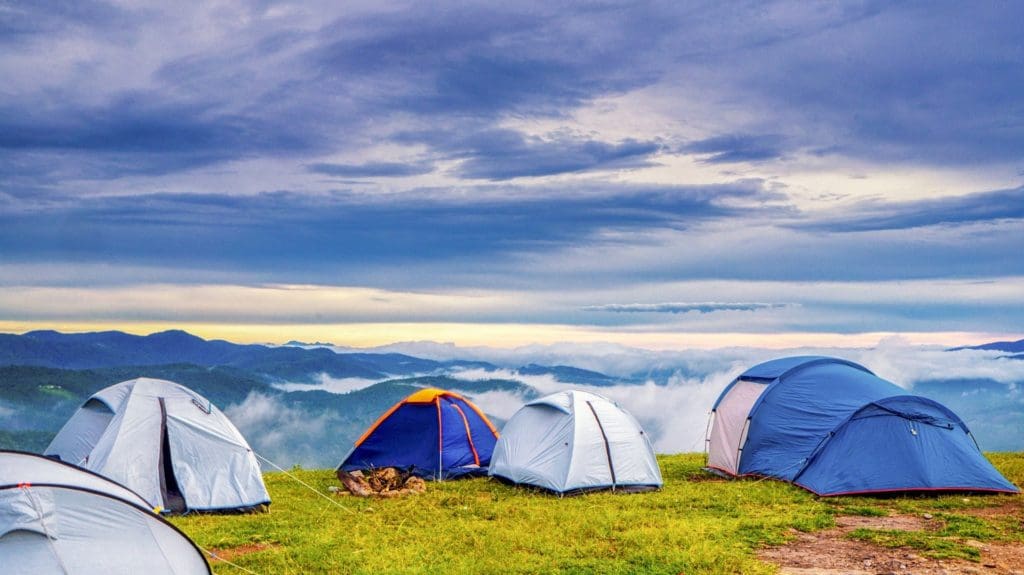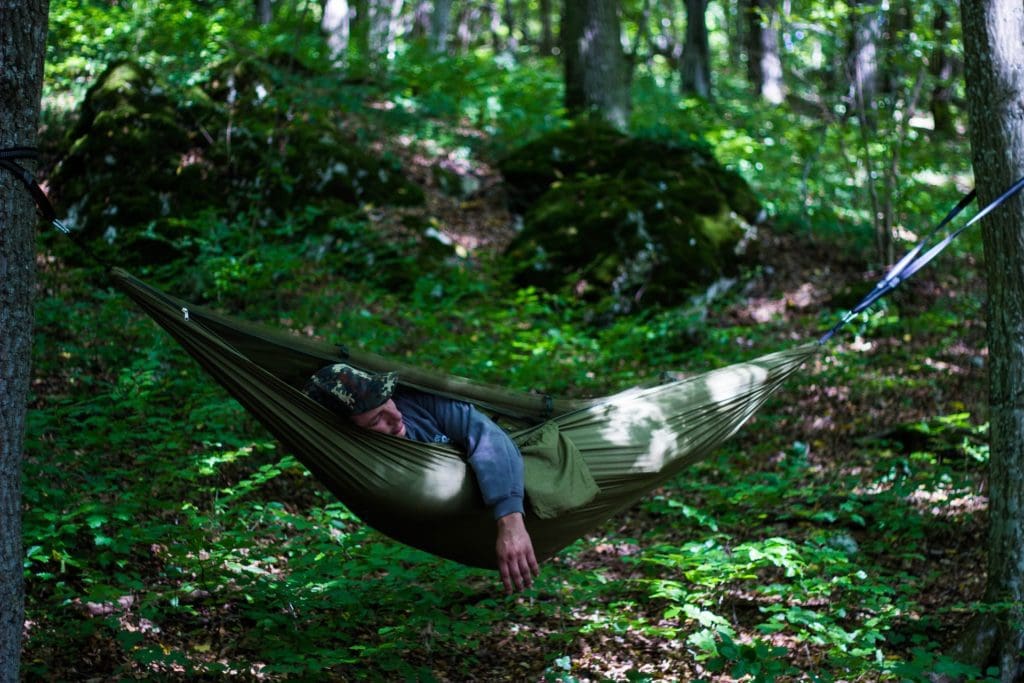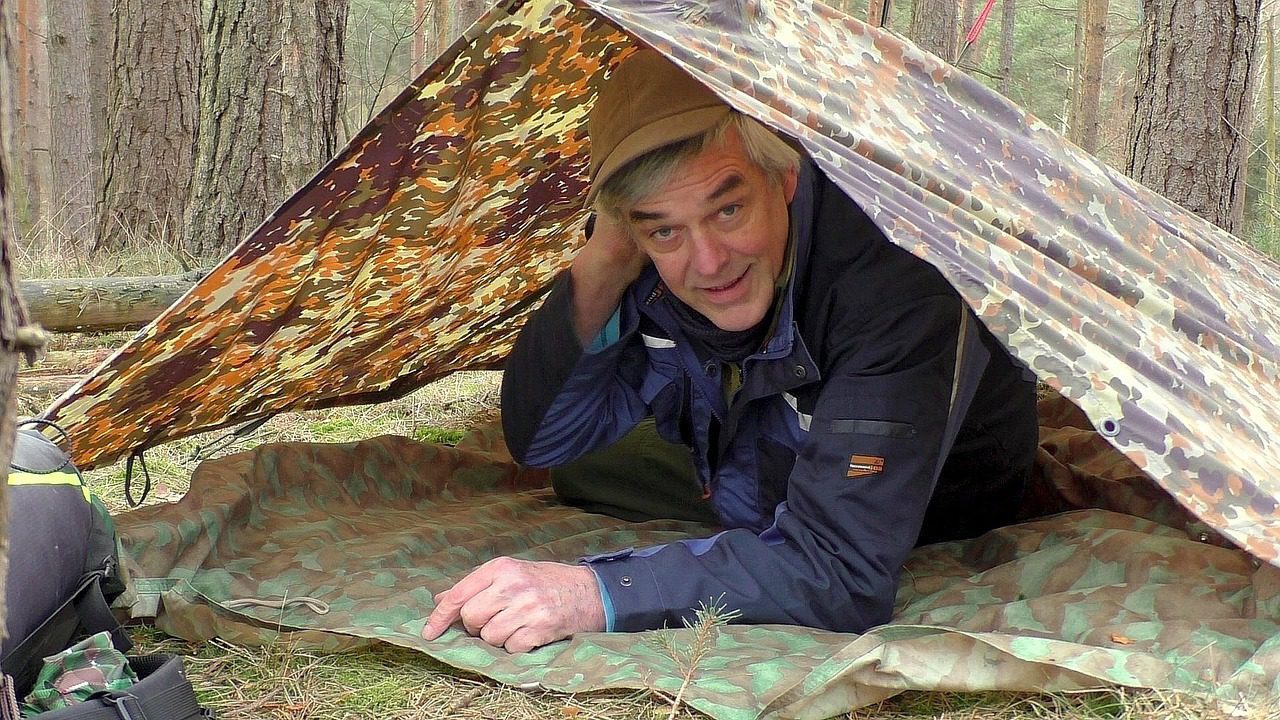Gear heads will attest that sometimes the most affordable and basic pieces of gear can prove themselves to be exceptionally useful, simply due to the broad scope of application. No piece of gear is as symbolic of this fact as the plain blue tarps. In the years since they entered the market, blue tarps have solidified themselves as camping essentials and sometimes are the first thing in a camper’s bag when they’re heading out. If you’re new to camping, here are some great ways you can put your blue tarp to use. There is an amazing number of uses for blue tarps.
Table of Contents
They Work Great as Emergency Tents
If you find yourself up against the elements, in heavy rain or against a dust storm, stretch out a rope between two trees, weigh down the edges, and drape a tarp over them. This makeshift shelter will shield you well enough until the storm has blown over. If you have a good amount of blue tarps with you, you should be able to roll it into a triangular tubular tent that will give you an extra level of protection from below. It is important to remember to keep the edge outside your “floor.” The rain is kept out and not pooled back into your tent.
They Make for Impressive Ground Cloths

As per the Huffington Post, everyone loves to go out to the picturesque outdoors during the summer season. For several families, camping during summer could be a time-honored tradition.
Before you set up your camping tent, lay down a blue tarp on the tent floor. It provides a great protective layer from the moisture below, will also act as a deterrent to bugs, and keep your tent cleaner and easy to organize. Make sure it is just a little smaller than the tent’s floor area so that it doesn’t redirect any rain from the outside back under you.
They can be Pretty Nifty Wraps for your Sleeping Bag
Many campers who value a barebones kit have slept on tarps, but no one will call them ideal sleeping surfaces because of how, for the lack of a better word, crunchy they are. That doesn’t disqualify them from the sleeping situation at all, however. If you’re in a leaky tent or sleeping in the open, a blue tarp can work wonders as an extra blanket that you wrap around your sleeping bag. It will repel any rainwater or otherwise from breaching your sleeping arrangement and provide an extra layer. It’s worth noting that this isn’t a great idea for extreme heat, since the tarp will not let your sweat evaporate, leading to a sticky situation no one would want.
They are Impressive for Shade and Shelter
One of the relatively simpler tarp constructions you can opt for is the one-sided lean-to. They are nifty to set up. You can create a floor even with a relatively small tarp. When repositioned in a way that the heat from your campfire is redirected towards you, keeping you warmer than most tents can simply by design. Lean-tos don’t just have to be “emergency” shelters, of course. They are pretty robust if you want an open-air camp that lets you sleep in nature’s lap while still affording you a degree of protection. In the day, you can set it up to block the sun and redirect breeze towards you, while in windy conditions, you can use it as a windbreak and shield yourself.
They are Robust Makeshift Ponchos
If you’re traveling light and don’t have any rain gear on hand, but end up finding yourself stranded in the rain anyway, a little creativity with a knife and your tarp can go a long way. The most common DIY poncho idea is to cut out holes in a heavy-duty garbage bag, but your trusty blue tarp is likely to provide a much more robust experience at that. It provides better protection and keeps your arms dry, while also not curtailing your mobility. Tarp ponchos also have the durability factor; you don’t need to discard them after a single-use, and they are much more likely to survive a long hike and then some. This is just one amazing use for blue tarps.
Wrap the canvas over a rope extended between two trees and weigh or stake the edges on the ground, and you have a sanctuary that will make a reasonable showing of keeping the downpour off.
Shelter, Windbreak, Heat Reflector, Sunshade
Regardless of the Camping sites, you choose to set up base at, the weather elements are always unpredictable and could really affect the comfort of your shelter. It’s simple and quick to develop, furnishes a story with a little covering, and can be situated comparable to the pit fire to think about warmth down to you much better than a tent can. Shelters are not just “crisis” covers; they’re the best for a genuine sleeping under the stars. A shelter can be situated to keep you concealed from the stinging sun and exploit any breeze available during the day.
Camping Bed Wrap
Even though it can be a little crunchy for ideal rest, a blue tarp can fill in as additional protection when folded over your camping cot. Especially in case you’re in a cracked tent or dozing outside. In any event, it will shield your sleeping bag from getting wet. If it’s warm and you sweat, the canvas will keep the sweat from wicking out to dissipate.
Ground Cloth

Place a blue tarp on the ground before setting up your tent. It gives an additional layer of security from dampness coming up from the ground. It helps keep your tent cleaner and fit as a fiddle. Overlay the tarp to guarantee it’s a similar size or marginally smaller than the tent’s floor with the goal that the tarp can’t get the rain downpour and direct it under the tent.
Impermanent Shelter
Extraordinary daylight can pummel your skin. Yet, it doesn’t need to keep you from appreciating the outside. Indeed, you can utilize a canvas for cover. You can make a teepee for your children utilizing a solicit canvas, a spread for your plants utilizing a work tarp, or a shed for your outside exercises this midyear – regardless of whether you’re into some home improvement ventures or a family end of the week party.
Child’s Play Area
Make the late spring season more pleasant for your children by building a play region on your terrace. With a couple of things like utilized squares of wood, reused materials, and beautiful tarps, you can make a protected and fun structure where your children can participate in loads of dynamic play. Remember to construct a blue tarp lounger for some relaxing.

Signal for help
You can utilize the blue tarp in numerous crisis circumstances. You can loosen up a tarp to signal for help. The best endurance tarps are those that come in splendid hues. Not only can it be used to signal for help, but the tarp will also help keep in the body heat, keeping the individual from hypothermia.
Excursion Covering
The quite warm climate calls for no particular reason for outside exercises like picnicking. Other great uses for blue tarps are for a picnic blanket or table covering because they are waterproof, making it simpler for you to tidy up any mess and food spills.
Cover Tool
You need to bring a blue tarp during excursions, climbs, and other outside experiences this mid-year. Tarps are an incredible method to conceal your things from miscreants. Pick a tarp with similar shading as the earth. Consider sticking branches or leaves on your tarp spread to make it blend with the environment.
Conclusion
We only covered a few of the versatility and amazing uses for blue tarps. They are all-purpose tarps that could prove useful in a broad spectrum of applications across home, outdoors, and various industries for commercial purposes.




